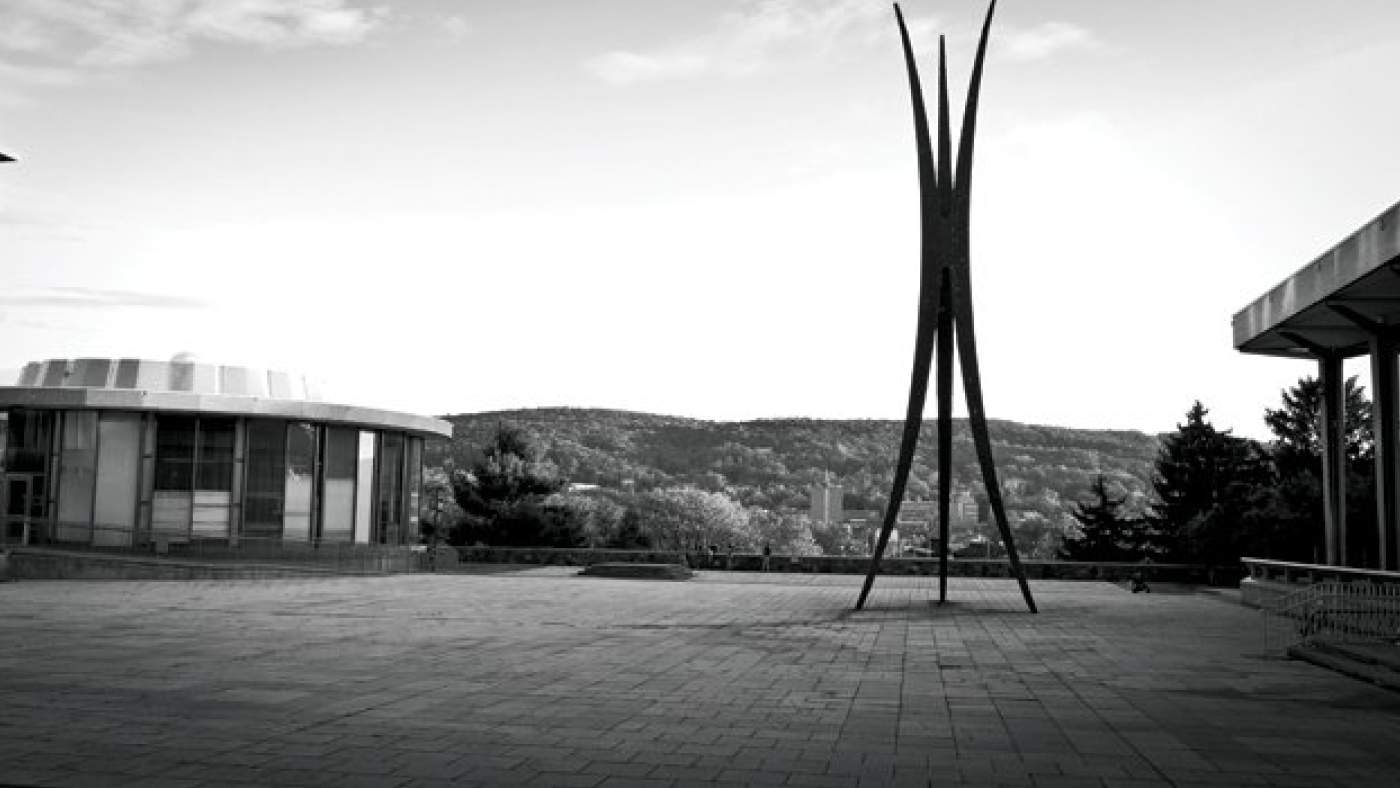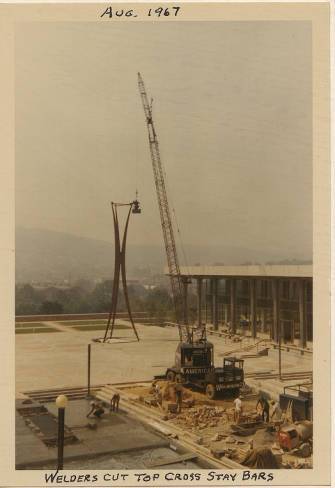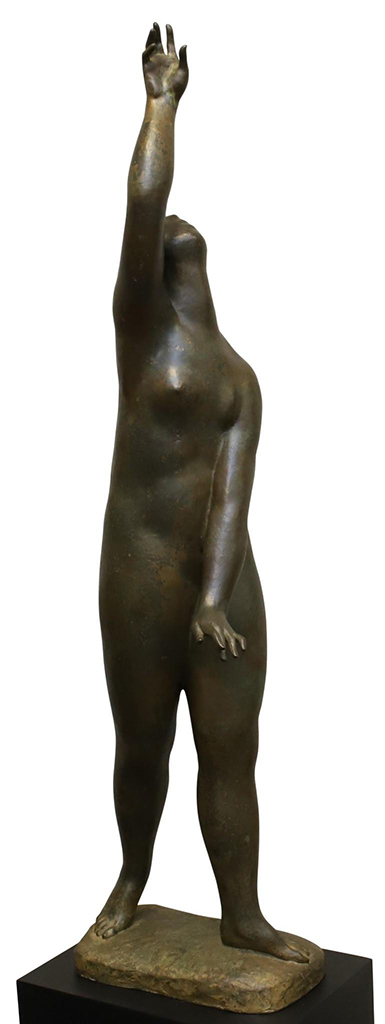Getting to Know the Artist Joseph J. Greenberg, Jr: An Interview With His Son Dan Greenberg

Figural forms, stone carvings of animals and abstract shapes make up the diverse catalogue of work by the prolific artist Joseph J. Greenberg, Jr. Born in 1915 in Philadelphia, PA. The artist started his education by studying engineering at MIT for a year before transferring to Tyler School of Art of Temple University. It was here that he majored in sculpture and his lifelong love of creating was cultivated. He then went on to travel to Italy in 1949 to further broaden his artistic horizon. While abroad he had a solo show in Rome and exhibited in the XXVI Venice Biennale. In 1951 the artist was awarded a $1,000.00 prize for winning the Metropolitan Museum of Art National Sculpture Exhibition. In 1953 he returned to Philadelphia. It was in this city that he prospered and worked until his death in 1991.
Among his many creations were commissioned public art projects made from a variety of materials. These pieces made up a major part of Greenberg’s career and legacy. His black granite Mother Bear and Cub is a well-known fixture at the Philadelphia Zoo. Perhaps one of his best known pieces is his largest, the sixty foot tall Symbol of Progress located in the heart of Bethlehem, PA by the entrance of the Bethlehem Area Public Library. The piece was created by Greenberg in 1967. It weighs 11,000 pounds and had to be helicoptered in to its home space. Take a look below to see images of this process taken at the time, including a photo of the artist accompanied by his wife. This piece is meant to stand as a symbol of various ethnic groups on which the city is based, moving upward to show the integration of the people of Bethlehem, then progressing skyward as they are strengthened by their diverse beginnings and their subsequent meeting.



(photos courtesy of Bethlehem Area Public Library website)
Greenberg created many none public works of art from a variety of media throughout his career, including life size sculptures of Adam and Eve made from fiberglass and epoxy. These are among the many sculptures in our Fine and Decorative Arts Auction catalog. The artist also taught sculpture in New Hope, PA, at the Philadelphia Museum of Art and Fleisher Memorial. In order to get a better understanding of the artist, we turned to his son, Dan Greenberg, for answers to a few questions of interest.
(Photograph: Adam and Eve)
AA: Did your father ever share his creative process with you? What did that look & feel like?
DG: His process was synthetic, informed by issues of the day and classical mythology. His career followed a series of approaches (traditional representational studies, simplified stylizations, active expressionist pieces, then a series of semi-abstract shapes, representational pieces purposely distorted for his own amusement and Mythological Figures), and he took great pride in mastery of the traditional skills of sculptural media, as well as being a pioneer in new materials (fiberglass/organically catalyzed polyester/later epoxy). He loved working in wood above all, but enjoyed being able to model, cast, carve, forge, weld and construct. His only regret was never learning to work in molten glass.
Beyond that, his process was internal, whatever piqued his curiosity. He freely shared craft and technique, starting me off with plasticine on an armature of wooden doweling (I made a dinosaur), we then made a rubber mold, plaster outer mold and thence a plaster cast replicating the original.
AA: What impact did your father being an artist have on you?
DG: Early access to the arts at all levels, personal tutoring in modeling, and a sense that being an artist was a viable occupation. During the 70’s and 80’s I and my friends often had the opportunity to help with installations and other “heavy lifting” duties.
AA: Which piece of your father’s is your favorite? Why?
DG: This is a tough one! There are so many! Of the public works some are long gone and only photos remain. The Family obelisk at Cheltenham Mall, the fountains at Temple University are both gone. The Symbol of Progress at Bethlehem Library is still there as are the Mother Bear and Cub at the Philadelphia Zoo. I think the bronze Eve perfectly captures his early approach, the bronze Hand series (done at the time of commissions for large fiberglass and wood sculptures for the Jefferson Hand Clinic), The Fox (Purpleheart), are all works I’m partial to.
AA: Your father has been quoted as saying that the Bethlehem sculpture was his favorite work, is that true & what are your thoughts on the piece?
DG: I think the full quote is "among" his favorites, which The Symbol of Progress certainly was. He enjoyed the commission process (as opposed to the Bell Telephone project Man and Universe in 1963-4), and was proud be first to utilize the new non-oxidizing steel of which it was made. I think the piece is wonderful! It represents the dynamic of diversity and integration and in my humble opinion holds its place against all other large public sculpture in the region.
He also was very proud of the bronze Eve sculpture which won 4th Prize at The Metropolitan Museum of Art exhibition: American Sculpture 1951. Other favorites would include: The King (Oliver King, jazz trumpeter), 1955, Mahogany, at the Pennsylvania Academy of Fine Arts, Black Granite Mother Bear and Cub at the Philadelphia Zoo, his portraiture (Sidney Bechet, plaster and fiberglass, Baronessa Lina Celesia di Vegliasco, plaster), as well as the whimsical Artist and Muse painted fiberglass/epoxy and are all in the auction.
AA: What would you say was your father’s greatest accomplishment artistically or otherwise?
DG: Hard to pin down, he had so many. Mastery of traditional and new media, being in the collections of Pennsylvania Academy of Fine Arts, Addison Gallery of American Art, Temple University, and Carnegie Endowment for International Peace. His involvement with the Philadelphia Art Alliance; as a vice-president for Art ’77-79, and on the board of directors ’57-58 and again ’77-82. He helped frame the 1% for Art Ordinance in Philadelphia.
It was a pleasure receiving the opportunity to speak with Dan Greenberg and receive answers to our questions in regards to his renowned father. Having insight into the artist makes the pieces that much more powerful and personal to take in as a viewer. Take a look at the images of the works of Joseph J. Greenberg, Jr. we have featured in our upcoming Fine and Decorative Arts Auction taking place on Thursday, June 6th beginning at 10:00 AM, by clicking the following link to our catalog.
Fine and Decorative Arts Catalog
(Photograph: Eve)










